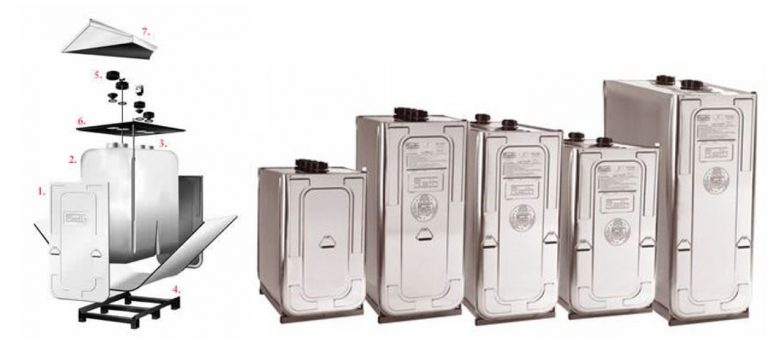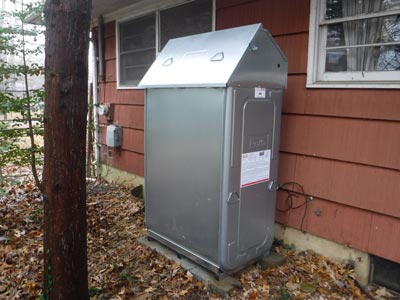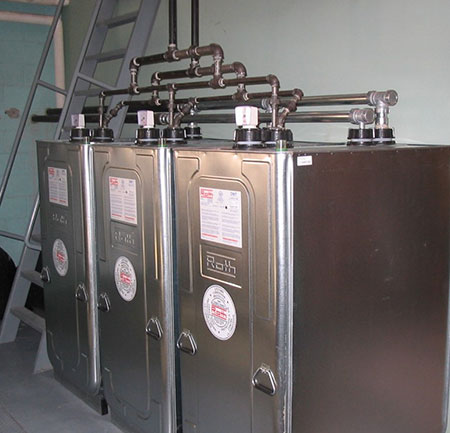If you’ve been shopping around for a new heating oil tank, you might’ve come across double-wall tanks. These tanks are very useful and are growing in popularity here in the United States. But like all tanks, they come with pros and cons. Before you decide to buy one of these tanks, I recommend reading our article on Granby Vs Roth tanks. We go a bit more in-depth about the differences between standard Granby tanks and Roth tanks.
How Does a Double Wall Tank Work?
Double-wall tanks are the most popular form of tank heating in Europe and are gaining popularity here in the United States. Double wall tanks come with an interior plastic tank that contains the heating oil. It is normally made from aluminum or steel and surrounds a plastic tank similar to a shell. The metal surrounding the tank acts as a backup in case the interior tank begins to leak.

What are the Pros of Double Wall Oil Tanks?
There are many pros to having a double-wall tank. We’ve compiled a list of the pros of the double wall tank below.
Protection from Leaks: The biggest advantage of a double wall tank is leak protection. If the interior tank were to ever receive a puncture or damage, the exterior tank will prevent that oil from spilling all over your floor. Although that isn’t common with these types of tanks, it is still a great precaution to have in case the interior tank begins to leak.
Saves Space: With these tanks being a bit taller than Granby tanks, they take up less space. This gives you the freedom to install two of these tanks close to each other in just about the same space for one Granby tank.
No Possibility for Corrosion: While your standard steel oil tank will eventually corrode over time, the interior tank will not. This is because the interior tank is plastic. The tank will eventually start to slowly deteriorate over time, but that will tank for a long time.
Less Sludge Buildup: With the inclusion of the plastic tank, you will often see less of a sludge buildup. This is because the interior tank will not rust from the inside out, which will result in less sludge production.
Better Warranty: Unlike steel tanks, double-wall tanks normally offer a longer-lasting warranty. Most of the time, the warranty tends to last 30 years, while steel tank warranties normally only last 10 years.

What are the Cons of a Double Wall Oil Tank?
Like all tanks, there are both pros and cons to owning them. Double-wall tanks are not different. Here is a list of the cons:
They’re Expensive: One of the major cons of these tanks in particular is that they are more expensive than standard steel tanks. This is because, unlike steel tanks, they have a bit more of a complicated construction process.
Unfamiliar Technicians: Unfortunately, many technicians are unfamiliar with these tanks. Additionally, because the standard steel oil tank has been around for 70+ years, technicians tend to prefer them over double-wall tanks.
Isn’t an Exact Replacement: Double-wall tanks have a different footprint than steel tanks. You might have to make a few changes to your existing fill and vent pipes to get a tank like this installed.
The Installation is Complex: If you wish to install multiple tanks together, then a very complex piping setup needs to be put in place. This setup is very specific and you MUST follow it if you want to install the tanks correctly.

Is a Double Roth Tank Worth Investing in?
We highly recommend investing in a double-wall tank. They are not only more compact, allowing for more space optimization, but the plastic interior tank is very useful. It provides a safe form of protection that we think is worth the extra money that it costs. Additionally, the inclusion of a 30-year warranty, makes it all the more appetizing.
However, you should consider this decision very carefully. We don’t want you jumping into anything without doing enough research. Take a look at our article on Granby vs Roth Tanks first before you decide to replace your current tank.
Happy Heating,
Hunter



